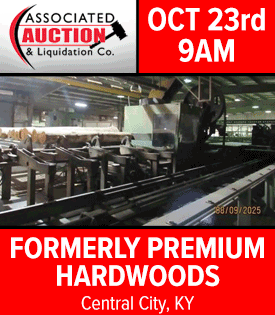LUMBERMENOnline.com’s Latest Industry News & Articles
Submit your company’s latest news or articleCrosscut Solutions Inc. is proud and excited to announce the acquisition of the assets of SC Industrial Resource Group Inc. Crosscut Solutions would like to thank David Spencer for his leadership and dedication while he owned SC Industrial for the past several years. Crosscut Solutions has incorporated the Industrial Woodworking Machinery line into our existing line of cut off saws and specialty machinery.
It is Crosscut Solution’s intention to make this transition as seamless as possible It is also our intention to maintain most of the present vendors of the various parts to ensure that you will receive parts similar to what you have received in the past. We also plan on expanding the inventory of the common parts to enable us to offer quick shipments on those parts. This will ensure you, the customer, that parts will be available for your present Industrial Woodworking Machinery cut off saws and finger jointers.
“Restoring our Forests and Markets”
The Kentucky Forest Industries Association (KFIA) will hold its 51st Annual Meeting on April 5 - 7, 2016 at The Brown Hotel in Downtown Louisville, Kentucky. The association plans to host over 400 company representatives from throughout the region. There will be a variety of discussions and activities to enjoy during the event. A number of opportunities will be made available for attendees to gather and discuss current issues, and meet with customers both new and old. The meeting will get underway with the John Smith Invitational golf outing at the Oxmoor Country Club Golf Course in Louisville, Kentucky.
The exhibit area will be open throughout the meeting and the Tree Farm Awards Luncheon will recognize outstanding individuals for their achievements in the forest industry community.
Topics for discussion will include updates on the Forest Health Center and logging Best Management Practices changes, American Chestnut Restoration as well as discussions on the current White Oak Market and the Tall Timber Buildings for the future.
For more information on exhibiting or attending the 2016 Annual Meeting or KFIA programs and membership, please call 502/695-3979, email [email protected] or visit the website at www.kfia.org.
The new Straight Frame (SF) Trailer from Battle Wagon is a response to customer requests for a well-appointed straight frame log trailer strong, enough to handle decades of logging and versatile enough to haul both logs and lumber products. The SF will more easily load extremely large logs buy removing the standard aluminum bolsters lowering the required lift height or haul lumber, ties or cants to market, offering the flexibility only available from Battle Wagon Trailers.
In addition to being sturdy and versatile the SF40 comes with an industry leading list of standard features including: Headache rack made from schedule 40 pipe, 3/8” King Pin Plate, 5”x5” heavy duty landing gear, lockable weather resistant chain box, nine load straps, full LED lighting package, Push Bumper, air ride suspension with On-Board scales to eliminate overloads, high quality Firestone radial tires, Hub Pilot steel bud rims, 5’ tall lightweight ALUMINUM bolsters and lockable bolster storage racks. All trailer lengths, and bunk combinations are available.
Like every Battle Wagon Trailer built using only the finest US made steel and components. The SF was designed by loggers for loggers to operate under the toughest of conditions and provide years of trouble free service. For more information on this and other Battle Wagon trailers visit www.battlewagontrailers.com
WASHINGTON – American Forest & Paper Association (AF&PA) President and CEO Donna Harman and American Wood Council (AWC) President and CEO Robert Glowinski have issued the following statements after filing a joint petition for review in the D.C. Circuit Court of the U.S. Environmental Protection Agency’s (EPA) treatment of biomass energy in the final Clean Power Plan.
Donna Harman, President and CEO, AF&PA:
“The Clean Power Plan does not put biomass on a level playing field with other renewable energy sources; this litigation will assure that EPA does not improperly constrain states’ ability to take advantage of the important role biomass energy can plan in addressing climate change. Managed properly, biomass-based energy provides carbon-reducing benefits to the atmosphere and should not be treated the same as energy from fossil fuels. Our facilities generate about two-thirds of the energy we use from biomass, primarily residuals that are left over from the manufacturing process, making ours among the most efficient industries in America.”
Robert Glowinski, President and CEO, AWC:
“Our industry strives to be as energy efficient as possible and is one of the leaders nationwide in the use of carbon-neutral biomass energy. Over 75 percent of the energy at our member companies’ wood products facilities is generated from biomass. After reviewing EPA’s Clean Power Plan, it appears that the rule may place unnecessary and inappropriate restrictions on states’ use of biomass energy as part of their plans to reduce CO2 emissions from electric power generation. This litigation seeks to protect biomass energy use as a critical component of renewable power. When biomass is used, it helps to reduce greenhouse gas emissions from fossil fuels.”
Montgomery Automated Sawmill Equipment of New Park, Pennsylvania, one of the North America’s leading manufacturers of quality sawmill carriages and other related machinery is delighted to announce its new interactive website. The new site, www.montgomerymill.com, was created by the team at LumbermenOnline.com, the sister company of LUMBERMEN’S Equipment Digest and features an easy to use navigation design. The new website features the complete line of Montgomery Sawmills from the light and fast FR Series to the WB for the largest logs as well as trade-in machines and more. If your mill is showing its age, visit www.montgomerymill.com today.
WASHINGTON – American Wood Council (AWC) Vice President, Government Affairs Sarah Dodge has issued the following statement regarding today’s passage of the “North American Energy Security and Infrastructure Act of 2015” (H.R. 8) in the U.S. House of Representatives.
Language was included advocating product neutrality in building energy codes and redefining the role of the Department of Energy (DOE) as a technical advisor in the development of model energy codes and subsequent state adoption. Reps. Marsha Blackburn (TN) and Kurt Schrader (OR) introduced a stand-alone bill (H.R. 1273) earlier this year with similar language.
H.R. 8 also included an amendment from Rep. Bruce Poliquin (ME) that would ensure that all power sources are able to compete on a fair playing field, particularly biomass energy, by revising the Clean Power Plan for all fuels so as to not favor one over the other.
“Wood construction is inherently capable of providing good thermal performance, helping to meet even the strictest energy requirements, while at the same time sequestering carbon from the air. AWC has simply asked that DOE not indicate product preferences in the model energy code development process, but allow all materials to compete to meet targeted energy efficiencies. The language in the House-passed energy bill will help ensure product neutrality so that all building materials have equal opportunity to contribute toward achieving building energy efficiency standards.
“AWC is also very pleased that Representative Poliquin’s biomass energy amendment was included in H.R. 8. The creation and use of biomass energy in wood products mills is integral and incidental to the manufacture of products such as lumber, panels and engineered wood products. The forest products industry has created a highly efficient, market-based system with significant biomass carbon benefits.
“The leadership of Chairman Upton, as well as Representatives Blackburn and Schrader, got this bill to the floor. AWC urges the House to retain its version of the energy language in any final energy efficiency legislation that is approved by the U.S. Congress and sent to the President for his signature.”
LEESBURG, VA. – The 2015 Code Conforming Wood Design (CCWD), a joint publication of the American Wood Council (AWC) and the International Code Council (ICC), is now available. The free download, along with 2012 and 2009 versions, is available here: http://www.awc.org/codes-standards/buildingcodes/ccwd.
CCWD concisely summarizes provisions related to the use of wood and wood products as they appear in the 2015 International Building Code (IBC). Most notable are the easy-to-use tables provided in CCWD for determination of the maximum building size for eight common occupancy groups using the newly formatted height and area tables of the 2015 IBC.
It also addresses methods for establishing fire resistance of wood assemblies and heavy timber; special provisions for pedestal buildings; criteria for finishes, appendages, and other wood features; the scoping of referenced wood design standards; an overview of structural provisions; and requirements for precautions during construction.
“Wood construction offers distinct design options typically not found in a single structural material, but adherence to the code is essential,” said AWC Vice President of Codes & Regulations Kenneth Bland. “The complexity of the IBC makes it difficult for designers to be aware of the many code provisions that allow wood products in construction. CCWD is a reference document which designers will find valuable when working through these code requirements. The goal of CCWD is to make the regulatory acceptance of wood construction as easy as possible for the designer.”
A recent webinar providing an overview of the 2015 CCWD was recorded and will soon be available as part of AWC’s self-directed study program. AWC is an ICC Preferred Provider and continuing education units are free.
WASHINGTON — The American Wood Council has launched a legislative scorecard to track federal legislators’ votes and bill sponsorship on public policies affecting the use and manufacture of wood products.
View the full Legislative Scorecard, and search for your own members of Congress, here:http://www.bipac.net/lookup.asp?g=afpa_awc
“AWC is constantly meeting with federal legislators to educate them on our industry’s policy priorities, such as regulatory reform, building energy requirements, and a host of manufacturing environmental air regulations. Our wood products manufacturers directly employ more than 400,000 people in the United States. Going into an election year, this scorecard is a way for those in the industry to easily track how their legislators are voting in Congress, and if they’ve been supportive of our issues,” said AWC Vice President of Government Affairs Sarah Dodge.
The Southern Forest Products Association (SFPA) Board of Directors elected its 2016 slate of officers during its recent Annual Meeting in Myrtle Beach, South Carolina. They are Chairman William Almond of Almond Brothers Lumber Company, Coushatta, Louisiana; Vice Chairman Jim Krauseneck of Weyerhaeuser, Federal Way, Washington; Treasurer Kerlin Drake of Anthony Forest Products, El Dorado, Arkansas; and Immediate Past Chairman Scott Vande Linde of West Fraser, Germantown, Tennessee. The board also reelected Tami Kessler as Executive Director.
The officers assume their new roles immediately.
“I look forward to continuing the legacy of this association, working with the excellent staff at SFPA,” Chairman Almond said. “Our association is a strong voice in the industry, and I hope to build on that strength as we continue activities through the coming year,” he added.
Wood-Mizer LLC, the only sawmill manufacturer to also produce blades, introduces the durable, high performance MaxFlex sawmill blade. Manufactured with premium quality steel selected by Wood-Mizer, the new MaxFlex blade will complement Wood-Mizer’s extensive line of bandsaw blades.
Featuring specialized alloy to provide longer blade flex life and increased durability, MaxFlex is a tough all-purpose blade that is engineered for maximum sawing performance. All MaxFlex blades feature a 10° hook angle with 7/8” tooth spacing and are available in these profiles:
• .042 x 1 ¼”
• .045 x 1 ¼”
• .045 x 1 ½”
• .055 x 1 ½”
“Wood-Mizer continues to focus on providing the industry with a variety of blade options for any sawing application and budget,” said Wood-Mizer Blades Manager John Storm. “MaxFlex Blades gives sawmill owners a premium quality all-purpose blade at an exceptional price.”
With the addition of MaxFlex, Wood-Mizer now offers blades in five distinct brands to meet every type of wood cutting application from green softwoods to abrasive and exotic hardwoods.
•SilverTip, Carbon: Ideal blade for primary and secondary breakdown.
•DoubleHard, High-Alloy: All purpose, durable blade for most sawing applications.
•MaxFlex, Premium: Durable, all-purpose blade made with specialized alloy for longer blade flex life.
•Bi-Metal, Industrial: Heavy duty blade for production sawing. Provides a longer sawing blade life, especially for cutting abrasive, exotic wood species.
•RazorTip, Stellite®: Specialized stellite-tipped blade for cutting abrasive, kiln-dried, tropical, specialty and other tough wood and beams.
•RazorTip, Carbide: Specialized triple chip carbide-tipped tooth blade for the hardest of hardwoods, and leaves behind a smooth finish.
Offering more than 60 basic blade profiles and an extensive array of combinations based on profile, tooth height, width, thickness, tooth set and length, Wood-Mizer blades offer unmatched cutting flexibility across the board.
###
As the leading manufacturer of portable band sawmills for more than 30 years, Wood-Mizer offers an extensive line of portable and industrial sawmill equipment. The company supports its equipment with legendary customer service, blades, and blade maintenance equipment. For more information about Wood-Mizer, call 800.553.0182 or visit www.woodmizer.com.
GB Group PTY Ltd., Victoria, Australia announces a new agreement with Wallingford’s Inc.® to be the exclusive distributor in the United States of GB Harvester and Slasher bars. For over 50 years GB has built a solid reputation by manufacturing products that set new industry standards and has therefore played a significant role in the development of the forestry industry. Thomas Beerens, Managing Director of GB Group is thrilled to have this dedicated team at Wallingford’s Inc.® represent his products in the U.S.A. “We at GB are honored to be represented by such an internationally respected manufacturer and distributor. Wallingford’s policy of continuing to innovate and improve the quality of their product will also ensure, by the two of us working together, that GB has an opportunity to offer better product for the current demand and to further develop our products to meet the future needs of the U.S. logging industry.”
Wallingford’s Inc.® has been serving the logging community since 1975 and is continually seeking new and better ways to satisfy their customers’ requirements. John (J) Wallingford states: “We are very excited to be part of the GB Global distribution group and are confident in the brand as recognized by our customers. Formally one of the market leaders here in the United States, GB has survived the global financial crisis. With this behind them we intend to make GB the number one brand of choice. Through intensive marketing and extensive field presence we will claim market share and demonstrate to our customers that GB will outperform its competitors while also providing for considerable cost savings”.
The GB Group has been expanding their range of guide bars, sprockets, and accessories catering to all markets and customers throughout the world. Their full range of guide bar options include, ¾” & .404 pitch bars with replacement nose, double ender bars, as well as, replacement nose tips and drive sprockets.
For more information, please visit: www.gbbarsusa.com
Central City, KY, August 14, 2015—Brewco Incorporated announces the acquisition of the Big Jake Scragg assets from Timberland Machinery Incorporated, located in West Plains, MO.
Mike Goldston, president of Brewco commented, “We are excited about this great opportunity to acquire Timberland Machinery’s Big Jake Scragg. Timberland produces the best scragg system on the market, and this adds a solid product line to our other outstanding equipment that we manufacture. With this acquisition we can now offer a scragg system that will complement many of the market segments we service including producers of grade lumber, crossties, and pallet cut stock.” Mr. Goldston added, “We are always striving to adapt to industry changes, and with the log supply getting more expensive, we identified the need to offer our customers the most efficient way to break down a log and process the wood. And the Big Jake Scragg System does just that.” In addition to the scragg, Brewco is also acquiring all automation and controls as well as the Auto Edger, Notcher, Trim Saws, and Rotary Kicker.
Timberland’s founder and owner, Dennis Franks, is looking forward to retiring and traveling with his wife. Mr. Franks said, “I’ve worked hard for many years developing and manufacturing scragg systems. The Big Jake Scragg System, which is named after my grandson, is near and dear to my heart and I wanted to ensure that my legacy was passed on to a company with a solid reputation, and Brewco is that company.” Mr. Franks added, “Several companies have attempted to copy my Big Jake, but the sophisticated and proprietary automation controls, along with the complex hydraulic system have allowed me to stay several steps ahead of the competition. Brewco has a brilliant staff that includes a Mechanical Engineer, a PLC/Automation Engineer, and a Hydraulic Engineer. This was a driving factor in my decision to sell the Big Jake to Brewco.”
Timberland Machinery, Inc. will continue to operate in West Plains, MO. However, the company will only manufacture a deduster and a stacker.
About Brewco Incorporated: Headquartered in Central City, KY, Brewco is a leading supplier of sawmill and wood processing equipment. Founded in 1991, Brewco was purchased in October of 2010 by Mike Goldston, Bill Hendrix, and David Piper. Best known for the B-1600 Grade Run-Around System, Brewco also manufactures stave mill equipment, crosstie processing equipment, and pallet mill equipment. Since the 2010 purchase, the company has grown from 22 employees to 47 employees.
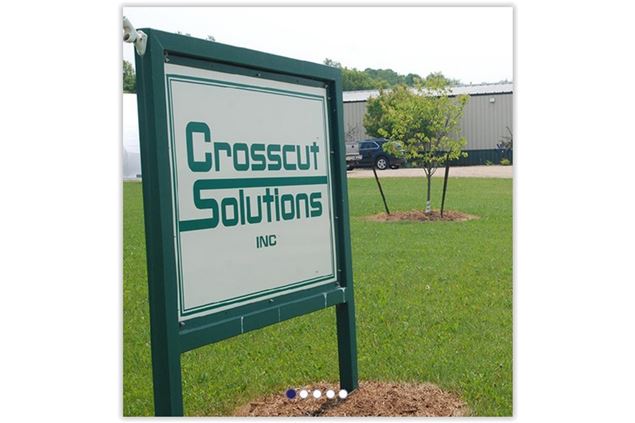



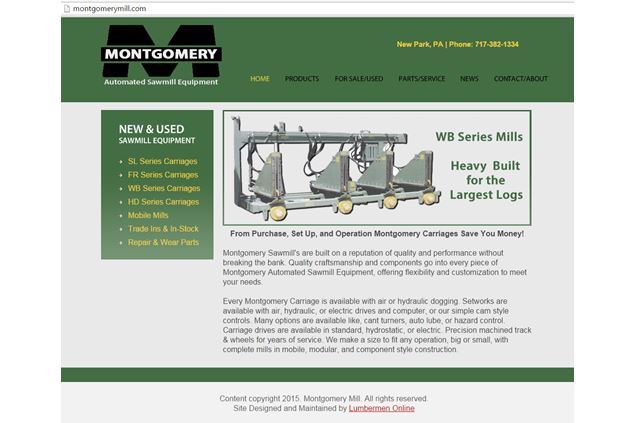

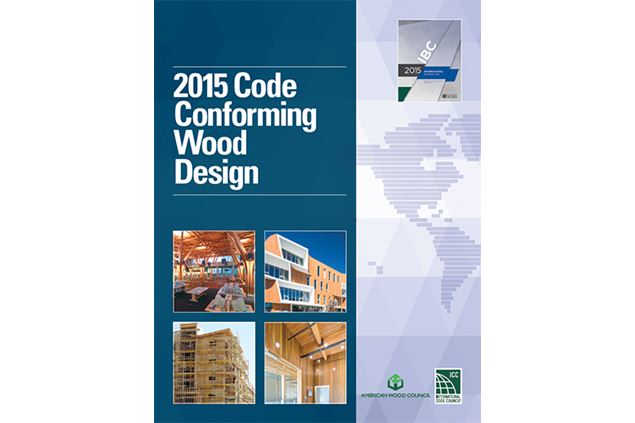



.jpg)
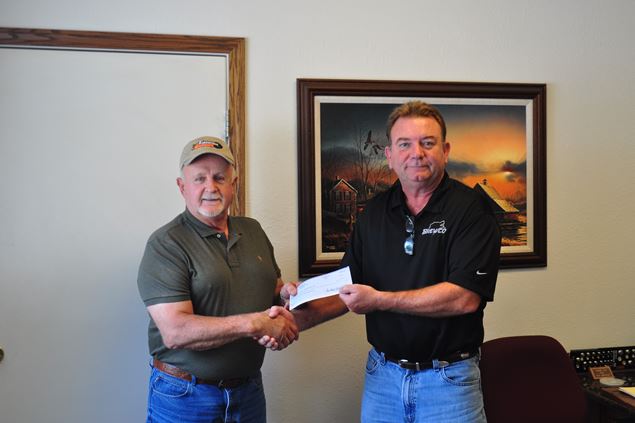



.gif)

